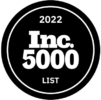- Guest Contributor
- January 11, 2023
Experts say a global recession may be inevitable in 2023, but it will unfold unlike prior economic downturns. So, how will this recession be different? One distinction: it won’t be a complete surprise. Recessions are a normal part of business cycles–the U.S. has experienced 14 since the Great Depression. An abundance of early forecasting (just run a quick Google search!) means businesses have ample time to prepare.
How is 2023 recession different from the ones that took place in recent history? It often makes sense to look to the past when preparing for the future, but global economics are constantly changing. The financial crisis in 2008 was a result of cheap credit and lax lending standards that created a housing bubble. When it burst, banks were left holding trillions of dollars of worthless investments in subprime mortgages. Many lost their jobs, savings, and homes. The recession in 2020 was the shortest, deepest one on record: many businesses shuttered in the wake of the COVID-19 pandemic. In 2023, factors like inflation, interest rate hikes, and geopolitical uncertainty have a high probability of leading to recession–some believe that if economists are predicting one, it most likely will not happen.
How will the next recession affect businesses? Read on to understand how the impact will hit differently, and learn about ways businesses can prepare for recession.
Shifts in the job market.
At the beginning of the Great Recession in 2008, 1 in 5 employees lost their jobs. Speaking to the impact, Peter Cappelli, management professor & Center for Human Resources director at the University of Pennsylvania’s Wharton School, said: “Many of those people never recovered; they never got real work again…a generation of young people entering the job market had their careers disrupted by it.”
There is still a high demand for labor headed into 2023: over 10 million job openings in the U.S. currently exist, but there are only around 6 million unemployed workers. The Great Resignation’s impact continues as many wait for the right opportunity before reentering the workforce. This strong job market may cool down. When that happens, businesses are more likely to cut open positions than lay off existing staff. Deeper into the recession, retained employees may experience weaker pay growth.
While navigating this level of uncertainty in the job market, businesses can prepare for quick staffing pivots by hiring temporary staff or seasonal employees to maintain a nimble workforce throughout the year. Consider outsourcing recruiting to a staffing agency like Jobble to streamline the hiring process.
Shifts in consumer spending capacity.
Americans collectively added $4 trillion to their savings accounts since early 2020, when the COVID-19 lockdown took effect. The sources of that abundance? Stimulus checks, expanded unemployment benefits, and an inability to go outside and buy things. A study found that over $360 billion of that sum will be spent down over the next year and a half, based on household saving and spending rates. More than $250 billion will be by the wealthiest Americans; spending power remains strongest at the top of the socioeconomic ladder.
Compare that to 2008, when consumer spending experienced the most severe decline since World War II. This sluggish return to spending meant the economy was slow to reach equilibrium again. In 2011, Federal Reserve Chairman Ben Bernanke stated: “Consumer behavior has both reflected and contributed to the slow pace of recovery.”
Businesses can prepare by thinking ahead to accommodate consumer demands. Consider expanding business networks and diversifying the range of customers served.
Shifts in industries affected.
Recessions impact different industries and sectors uniquely. When the housing market crashed in 2008, financial services and construction industries were the hardest hit; bargain food retailers and warehouse clubs fared well when consumers prioritized affordability.
Recession 2023 is already unfolding unlike recessions prior. For example, recent tech layoffs indicate the beginning of a white-collar recession. Consumer demand has pent up since the recession in 2020–leisure and hospitality industries are expected to grow. Employment reports show that of 10.3 million job openings at the end of October, many were in leisure and hospitality–particularly restaurants and bars–in addition to healthcare and social assistance industries.
Businesses can prepare by considering which components of day-to-day operations fall within these categories. Evaluate existing suppliers, major customers, and competitors–although affected industries may seem isolated, the downturn will likely have a ripple effect that reaches all corners of our economy.
Shift in the supply of available goods.
The COVID-19 pandemic disrupted essential supply chains, and the effects are still felt today. Plants shut down, transportation of goods was backlogged, and we are still experiencing widespread inventory shortages–all of which have contributed to the recent surge in consumer prices. Markets for gas, truck drivers, toys, ready-to-assemble furniture, iPhones, and computer chips have all been affected. Consumer demand remains strong, however.
Consumer spending dropped off in 2008, so the manufacturing sector in particular suffered severely. Industries such as machinery, metals, and transportation equipment observed drops in customer orders by up to 42 percent within a single year.
Businesses can prepare by assessing and prioritizing customer needs and spending patterns when ordering new inventory, with special attention to goods in short supply. Consider stocking alternatives to popular items or offering preorders.
With some forethought, businesses can build growth plans to weather a recession and position themselves for greater gains and subsequent recovery.
The Staffing Handbook: Level Up Your Skills

About the Author: Meghna Jaradi is a freelance writer and events manager with experience working for the Seattle Times, Kitchen Arts & Letters, Book Larder, Peddler Brewing Company, and more. You can contact her on LinkedIn.










